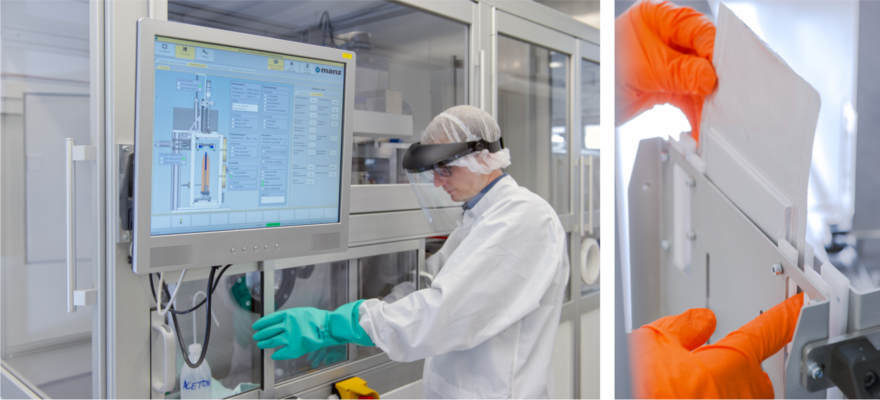Cell-Fill - Process-Structure-Property Relationship for Filling and Wetting Processes of Large Format Lithium-Ion Batteries
The electrolyte filling of lithium-ion batteries and the subsequent wetting are essential process steps in battery production and represent the interface between cell assembly and formation. The motivation of the Cell-Fill project is to expand our understanding of processes and to develop a filling and wetting strategy that is optimised in terms of time and costs.

Executive Summary:
Within the Cell-Fill project, the effect of process-structure/quality-property relationships on filling and wetting processes are therefore being scientifically investigated. The focus is on...
- The identification and characterization of potential filling time reducing material and process parameters
- Innovative process and cell design
- Development of methods for inline characterization of the filling and wetting process
- Simulation-based recommendations for the filling operation
- Reduction of process time by 30-50 %
Time- and cost-optimized filling and wetting strategies are developed through results from the Cell-Fill project.
Project Details:
With increasing relevance of electrical storage technologies for mobile and stationary applications, the economical production of suitable batteries in large quantities is of major importance. In the production of electric vehicles, battery cell production plays a central role from both a cost and an environmental point of view. Electrolyte filling is a high capital commitment factor due to the long storage time. The process-structure-property relationships investigated in Cell-Fill therefore represent decisive steps in the direction of competitive energy storage industry.
The electrolyte filling of a lithium-ion battery and the subsequent wetting are essential process steps in battery production and represent the interface between cell assembly and formation. This presents a high potential for throughput increase and cost reduction due to shortened storage times. The study of electrolyte filling and its impact on quality characteristics has so far received little scientific attention. Best practice solutions are available, but which processes dominate filling and wetting and how these can be accelerated has hardly been systematically analyzed. To describe the filling and wetting process, only qualitative modelling approaches have been used. A quantitative study of the influence of possible process parameters (e.g. pressure, temperature and dosing quantity) on wetting time and product quality has not been performed. Additionally, there are no proven solutions for in-line monitoring of the filling process.
Within the Cell-Fill project, the topic of filling and wetting is therefore being scientifically investigated. The further development of process-structure-property relationships is the focus of the project. Based on findings of the previous Cell-Fi project, the throughput time is to be reduced further (up to 30% shorter throughput time). The focus here is on the investigation of innovative electrolytes, additives and surface-modified separators in order to identify material-side optimisation potentials. In addition, innovative process and cell designs are investigated to optimize the filling and wetting processes. The final derivation of a time- and cost-optimized filling and wetting strategy is based on simulations and quantitative models. Another project result is the development of an in-line capable ultrasonic-based measurement technique for characterizing the wetting state of large-format lithium-ion batteries. The results of this study will improve Germany’s role as a global player in the field of battery cell production.